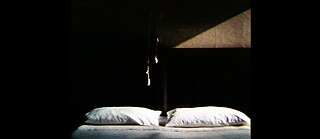|
8:30 PM
LES ANTIQUITÉS DE ROME, Jean-Claude Rousseau
Film Screening
-
Close-Up Film Centre, London
- Part of series: The Films of Jean-Marie Straub and Danièle Huillet

For over twenty years, Jean-Claude Rousseau has built one of the most unique works of French auteur cinema, as intimate as mysterious, between documentary and fiction. He has collaborated with Jean-Marie Straub and Danièle Huillet, who have long admired his work. In this retrospective we will show Rousseau's film Les Antiquités de Rome following the screening of Straub and Huillet's first film shot in Rome, Othon, on the same evening at 6pm.
‘Thou stranger which for Rome in Rome here seekest
And nought of Rome in Rome perceivst at all’
Joachim du Bellay (Translation Edmund Spenser – 1591)
Can one find Rome in Rome? Once all roads had lead to Rome. But the time has gone, and the remains are being reconstructed. Rain pours down from the sky through a hole on a dome. The ghost of the past is in the present. And the present, too, starts to disappear. An ode to the ones that are disappearing is the light that traces objects. Geometrical shapes like circle, triangle, and square appear and disappear as light changes. The record of time overlapped with construction noises, shows an eternal image, a shapeless sky. Image is liberated through stare and waiting, and the film must start all over again.
‘Yes, and that’s a basic point in Les Antiquités de Rome, which despite its title doesn’t show any of Rome’s antiquities, or we could say that it shows the minimum, virtually nothing. All we see of the Pantheon is the oculus in the dome, the Cestius Pyramid is shown flattened, so it becomes little more than a triangle without any thickness, the Coliseum is barely glimpses at the end of the street, at night, the Arch of Constantine was being renovated when I filmed it, covered in scaffolding, and there was almost nothing left of the Circus Maximus, and so on. And what we find here is the idea that we have to show less in order to see better. What you mentioned about inwards – what you see or you don’t see through them – leads me precisely to that idea: to try to show as little as possible. And n fact, the best thing would be not to show anything at all. That’s what happens when the connection between the lines and the volumes causes our gaze to pass through the frame, and it doesn’t dwell on the pattern, the gaze goes beyond the pattern.. That’s what I mean when I say that our gaze becomes trapped by that connection of lines and volumes: it reaches a state of intellectual absence, and it’s no longer about observing what is shown, rather that the gaze goes beyond what is shown. It’s a state of absence, of abandonment. Of weakness, even, I should say.’ Jean-Claude Rousseau
Les Antiquités de Rome, Dir: Jean-Claude Rousseau, France, 1989, Super8/on 16mm, 87 min., in French (little dialogue, subtitles will be handed out).
‘Thou stranger which for Rome in Rome here seekest
And nought of Rome in Rome perceivst at all’
Joachim du Bellay (Translation Edmund Spenser – 1591)
Can one find Rome in Rome? Once all roads had lead to Rome. But the time has gone, and the remains are being reconstructed. Rain pours down from the sky through a hole on a dome. The ghost of the past is in the present. And the present, too, starts to disappear. An ode to the ones that are disappearing is the light that traces objects. Geometrical shapes like circle, triangle, and square appear and disappear as light changes. The record of time overlapped with construction noises, shows an eternal image, a shapeless sky. Image is liberated through stare and waiting, and the film must start all over again.
‘Yes, and that’s a basic point in Les Antiquités de Rome, which despite its title doesn’t show any of Rome’s antiquities, or we could say that it shows the minimum, virtually nothing. All we see of the Pantheon is the oculus in the dome, the Cestius Pyramid is shown flattened, so it becomes little more than a triangle without any thickness, the Coliseum is barely glimpses at the end of the street, at night, the Arch of Constantine was being renovated when I filmed it, covered in scaffolding, and there was almost nothing left of the Circus Maximus, and so on. And what we find here is the idea that we have to show less in order to see better. What you mentioned about inwards – what you see or you don’t see through them – leads me precisely to that idea: to try to show as little as possible. And n fact, the best thing would be not to show anything at all. That’s what happens when the connection between the lines and the volumes causes our gaze to pass through the frame, and it doesn’t dwell on the pattern, the gaze goes beyond the pattern.. That’s what I mean when I say that our gaze becomes trapped by that connection of lines and volumes: it reaches a state of intellectual absence, and it’s no longer about observing what is shown, rather that the gaze goes beyond what is shown. It’s a state of absence, of abandonment. Of weakness, even, I should say.’ Jean-Claude Rousseau
Les Antiquités de Rome, Dir: Jean-Claude Rousseau, France, 1989, Super8/on 16mm, 87 min., in French (little dialogue, subtitles will be handed out).
Location
Close-Up Film Centre
97 Sclater Street
London E1 6HR
United Kingdom
97 Sclater Street
London E1 6HR
United Kingdom
Location
Close-Up Film Centre
97 Sclater Street
London E1 6HR
United Kingdom
97 Sclater Street
London E1 6HR
United Kingdom